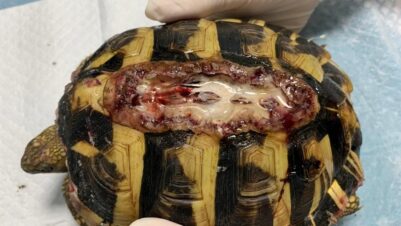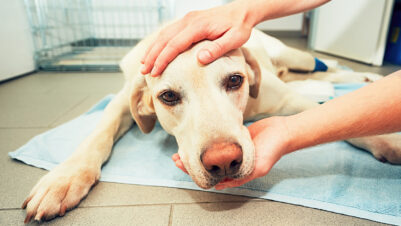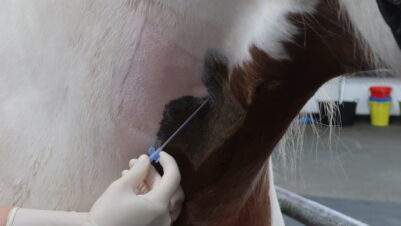Birds of prey, otherwise known as raptors, are defined as any birds that pursue or feast upon other animals. The term “raptor” comes from the Latin “rapere” and indicates the ability to “grab” prey. In the United Kingdom, there are 15 accepted native species of raptor, which does not include the migratory or occasional visiting species.
Falconry is still a very active interest in the UK, with high numbers of birds flown both privately and commercially across the nation. Therefore, while not necessarily the most common bird to present in general practice, there is a high likelihood of presentation or enquiry regarding the health of both captive and wild raptors at some point in a veterinary professional’s career.
Raptor species
Species of raptor can be divided into the following families:
- Accipitridae – hawks, eagles, buzzards, harriers, kites and Old World vultures (ie those found in Europe, Asia and Africa)
- Pandionidae – osprey
- Sagittariidae – secretary bird
- Falconidae – falcons, caracaras and forest falcons
- Cathartidae – New World vultures, including condors
- Cariamidae – seriemas
- Strigiformes – owls

Tele-triage
Unless a raptor is presented to the clinic as a wild individual brought in by a concerned member of the public, it is highly likely that a phone call will be received to report a concern regarding the health of an owned bird.
As with all tele-triage cases, there are some key queries to ask the caller regarding the health of their bird. Key areas to focus on include:
- Behaviour – how are they behaving? Are they able to perch, and have they been flying normally?
- Plumage – do they have a fluffed/ruffled appearance? Does their plumage appear clean or unkempt?
- Vocalisation – do they vocalise normally? Are there any changes to their voice?
- Respiratory concerns – are there any signs of abnormal breathing, odd noises or orthopnea (Figure 1)?
- Consumption – have they been eating normally? Are their crops full or empty?
- Bleeding – is the bird bleeding from an unknown source, and are there any signs of trauma?
- Mutes – are the mutes a normal colour, and are they loose or absent?
If the bird is reported as having any deviance from normality, it is worth advising the owner to seek clinical assessment by a veterinary professional.
Triage and initial assessment

Upon arrival at the clinic, a raptor should be triaged for an initial assessment of urgency. It is worth remembering that birds of any species will attempt to hide signs of illness as a survival response. Therefore, if an individual looks visibly unwell, whether in behaviour or demeanour, then it is potentially quite serious.
Initially, it is worthwhile to take a hands-off approach to minimise further distress to the bird and, instead, visually assess the individual as briefly as possible (Heatley et al., 2001). Do not overthink the process, and perform your ABCs (airway, breathing, circulation) as you would with any triage case. Owned raptors will likely be presented in a falconry box or on a glove (Figure 2). The way owned raptors are presented can make assessment more difficult, ie within a darkened box or hooded on a glove, but assess as best you can, taking these factors into account.
Always ensure that your assessment includes signs of any disease that could be introduced into practice, with avian influenza a comparatively low risk in raptors but a potential differential all the same (Chitty, 2021).
Where next?
Once assessed, it may be that the patient’s clinical signs allow it to remain within its box or with the owner on the glove. However, if the bird requires further support, it is best to take them to a designated clinical area. The potential severity should not be minimised; the key thing to remind yourself of is that there is often a fine balance between life and death. This may sound dramatic, but unfortunately, with particularly sick birds, this can often be the truth, with the smallest detail tipping them over the edge. Even the slightest inappropriate handling or stress can and will decide this balance.
If oxygenation support is required, the raptor should be placed in an oxygen kennel for around 20 minutes prior to handling. The kennel should be located in a darkened and, ideally, quiet ward that is heated to around 29˚C; however, bear in mind that wild birds and certain species, such as gyrfalcons, may be prone to overheating at such high temperatures (Cooper, 2002). Oxygenating sick avian patients has been shown to be highly conducive to a positive outcome.
Once placed in a suitable kennel, the time prior to handling should be used well and allows for setting up for any likely eventualities as needed. While the basics should have already been set up before the bird’s arrival, once in situ it may be that more items can be prepared. In turn, clinical information (weight, etc) from falconers is often up to date, allowing for accurate calculations of emergency drug dosages and ASA risk. By using effective preparation, you can minimise delays to treatment.
Handling
When handling any raptor, it is important to consider the level of appropriate restraint needed for patient and handler safety. The room should be secure to ensure the patient cannot get any speed if it escapes handling, thus minimising the risk of it damaging itself. Ideally, the room will be darkened or with no windows visible to prevent the bird from hitting the glass in such an occurrence. Furthermore, you should ensure there are no “contact points” where the bird can injure itself from baiting.
When handling any raptor, it is important to consider the level of appropriate restraint needed for patient and handler safety
When handling, the raptor’s feet should be secure to prevent risk to handler and also to prevent the bird grasping itself (Chitty and Monks, 2018). In most species, the beak is a lesser risk than the talons; however, it can still draw blood or do physical damage if not properly held.
It is crucial to bear in mind that rough handling can lead to feather damage in all species. In a worst-case scenario, feather damage will result in a bird being unable to fly, which affects an owned bird’s ability to work and a wild bird’s candidacy for release (Mullineaux and Keeble, 2016). As with all birds, when a raptor is being handled, remember there is no diaphragm present, and as such, pressure upon the keel can prevent a patient’s ability to breath and lead to panic.
Head-to-talon assessment
Whether the bird is being assessed while conscious or if the assessment is performed under general anaesthesia, a full head-to-toe assessment should occur. This involves an assessment of:

- The eyes – are they damaged? Can they follow the movement of a finger, etc?
- The ears (Figure 3) – blood from ears can indicate trauma and can be a visual indicator of a fractured skull
- The beak – is it damaged or dirty, and is there visible trauma?
- The head – is the bird able to hold its head normally? Is it breathing normally?
- The wings and legs – is there any obvious crepitus, damage or trauma? How are the wings being held? Are they dropped?
- The torso – are there any missing feathers that could indicate trauma? What is the quality of the feathers?
- The feet – how is the patient’s ability to grip? (Do not use fingers to test!) Are there any signs of bumblefoot, etc?
- The rear end – is it clean or stained? Is there any off-colour faeces or indication of diarrhoea, etc?
The importance of ophthalmology

The eyes are highly important for raptors, and a proper ophthalmic check should be performed in cases of suspected trauma (Figure 4). Haemorrhage into the vitreous body from the choroid and/or pecten occurs in approximately one-third of traumatised raptors (Coles, 1997). Given that the pecten effectively sharpens a bird’s eyesight when compared to mammals, a damaged pecten may decide the outcome of a patient (Coles, 1997). This is especially true of wild raptors who present following road traffic accidents, as the likely outcome will be euthanasia if damage affects their ability to effectively hunt.
Further considerations
Following triage and assessment, the decision can be made to perform further diagnostics or provide supportive treatment in the hospital. Fluid therapy is likely to be provided intravenously or via the inguinal skin folds. An intraosseous route is less common, but still viable. However, birds have pneumatised bones involved in respiration in the femur and humerus, so never use these sites for intraosseous therapies; instead use the distal ulna or proximal tibio-tarsus. Nutritional support can be provided by offering suitable food items or through crop/gavage feeding if required. Medical or surgical support can be decided by the clinician following a full assessment.
Birds have pneumatised bones involved in respiration in the femur and humerus, so never use these sites for intraosseous therapies; instead use the distal ulna or proximal tibio-tarsus
Final thoughts
The key to raptor assessment and treatment is often efficiency and speed. The cause of a raptor’s presentation to a veterinary practice is varied, but by following the basic steps of thorough preparation and planning, and by using suitable, available equipment, raptors can be assessed effectively in practice. Efficient and effective emergency triage results in a much higher likelihood of a positive outcome when treated.











